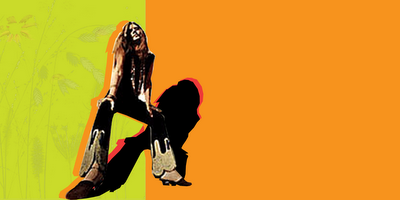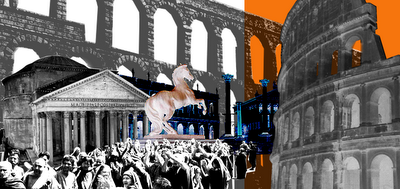Community
The development of a coherent nomadic community structure is necessary in order to facilitate a large number of nomadic travelers. The nomadic community will not operate in the same way as traditional nomadic communities – like the Bedouins, the Roma of South and
The makeup of the traditional nomadic communities includes community, social and cultural functions. Because of the coherence of the community in terms of membership, the rituals and customs either do not need a separate method of facilitation or is built in to the architecture and rituals of the group.
American nomadism, because of the extreme cultural variation and individuation that will be inherent, will necessitate a more specific infrastructure that will accommodate the community functions that would otherwise be missing. The community needs that need to be addressed can be collected into hubs that will act as attractors and nodes of organization. Nomads can collect around a hub in one location and be able to fulfill any social or cultural functions that would otherwise be unmet. These functions will range from educational to civic to commercial. A range of base elements can be augmented by specific elements depending on the location, allowing for specialization and competition within the network of hubs while preventing excessive duplication.
Basic needs will be basic commercial (for the provision of food, energy, repair services, and other basic needs), cultural, and civic (especially a post office). Because of the material and staffing needs of these elements, the hubs will be located near populated areas. The size of these hubs can vary from small filling stations to larger scale destinations with specialized elements included.
Specialized facilities can vary based on location, but may include educational facilities, regional cultural facilities, etc. Because of the specialized nature of the elements in these hubs, it will be most effective to have them located near larger urban areas that can provide the skilled labor and services to maintain the advanced level of facilities.
Multiuse facilities can be augmented by traveling facilities. Traveling libraries and educational facilities have become increasingly popular in non-industrialized countries to allow a dispersion of knowledge over a larger area while working within more limited resources. Experiments with the Hawawir community in
These facilities can also allow members of the nomadic population to maintain a more service based economic function – like a traveling salesman – while allowing them the freedom to move. The traveling salesmen of the
The suspicion that nomadism will diminish the importance of, or potentially eliminate regional variation for the sake of standardization, fails to take into account the impetus of moving. Regional variation ensures novelty and attracts the nomad. And what I propose is not the elimination of sedentary life, but the accommodation of nomadic life. A large sedentary population is not only to be expected, but is necessary to maintain two major elements of a successful nomadic society: provision of materials and services and destinations to travel to. Without a destination, a nomad has no reason to leave. Without the availability of materials and services at dependable and accessible locations, nomads would be physically incapable of maintaining a nomadic lifestyle in addition to the expected standard of living that has become so expected.
Studies of the optimal tours throughout the
“Given a collection of cities and the cost of travel between each pair of them, the traveling salesman problem, or TSP for short, is to find the cheapest way of visiting all of the cities and returning to your starting point. In the standard version we study, the travel costs are symmetric in the sense that traveling from city X to city Y costs just as much as traveling from Y to X.”[2]
Because the problem is inherently based in the idea that the salesman will return to the same location, it ignores both the past examples of and the potential future for nomadic salesmen. Assuming that the salesman can continue to travel and never worry about returning to the same point remains an un-explored, and increasingly economically valid concept. As the importance of non-traditional commerce – E-bay and Amazon.com being major players in this new phenomenon – grows, the traveling salesman becomes a niche expert who can provide non-material or non-traditional services.














